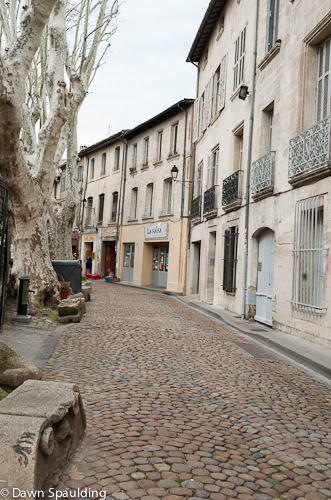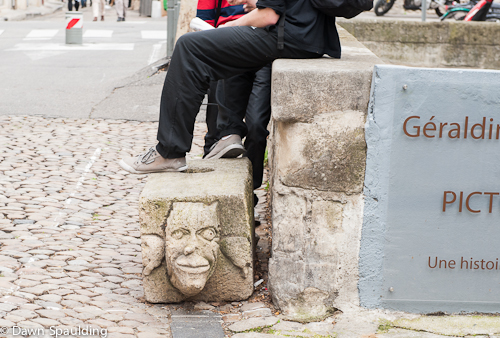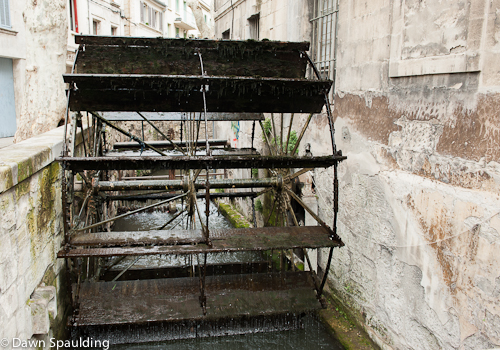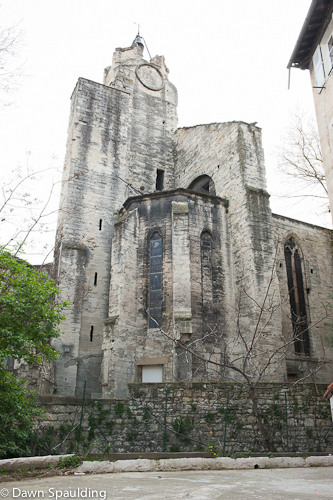
River stones pave the street
Rue des Teinturiers is a quaint area in Avignon’s old city center (so this is like doubling up in the “charming” category).

One of many limestone blocks
Translated, this is the street of dyers. Thanks to the man-made canals that supply pristine water from the Vaucluse River, the neighborhood was once the center of Provence’s textile industry. In the 15th century, the mills produced silk and wool; in the 17th and 18th centuries, they produced the colorful cotton prints inspired by Indian designs that we now recognize as quintessentially Provençal.
The canals were originally constructed in the Middle Ages to provide drainage. They fed into the moat that used to run along the ramparts.

A remaining water wheel
By the 19th century, the street had 23 water wheels. The wheels’ force activated the machines in the silk mills. The water was used to rinse the dyed fabrics. All but four of the wheels were destroyed during the French Revolution.

Couvent des Cordeliers
A chapel and bell tower from a 13th-century Franciscan convent, Couvent des Cordeliers, stands at one end. Prominent Avignon families and Laura de Noves, Petrarch’s muse, are buried here.
No comments yet.